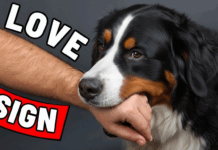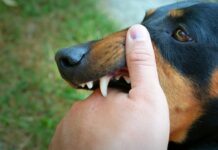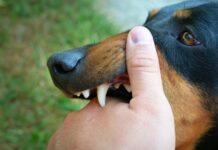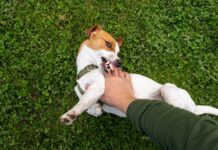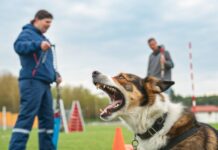Last Updated on April 6, 2022 by Dogs Vets
Adjusting Your Pup’s Schedule – Getting Them Used to You Being in the Office Again
Your dog has had the luxury of having you home, and probably very close by, all day long for some time now. This was a change to your dog’s routine and schedule that they likely adjusted to quickly thanks to all of the extra time with you, and one that they’ve certainly enjoyed as much as we have.
The same can’t be said, though, as you make the transition back to business as usual.
Especially for dogs that have been adopted or puppies that have been purchased during this pandemic period and know no other life than one where you are at home with them all day long, it’s important to make this transition as easy as possible to help your dog through it.
For your own well-being as much as your dog’s, you’ll want to know how to approach and prepare for this transition, how to utilize safe sleeping spots and cute dog toys to encourage independence and keep your dog busy, how to get your dog ready for the day alone, how to evaluate whether your efforts are working or not and a couple of other things that we’ve noted below.
Re-introduce a work routine for your dog, before work begins
When you started staying home all day it was a real adjustment to your dog’s routine, but now you’re returning to your normal schedule and their routine is changing again — and your dog isn’t as likely to love this change quite as much as the last.
Helping your dog make this adjustment before you even return for your first day can be helpful though.
Begin making slight changes, which will only serve to help you, too! Consider gradually waking up earlier and earlier until you’ve shifted into your work schedule wake-up time, shifting your dog’s breakfast time and shifting when you take your dog outside for their morning walk.
Most importantly, be sure not to underestimate your dog’s ability to learn and recognize subtle details in you and your daily routines.
If you have a work uniform, carry a particular work bag or spend twice as long in front of the mirror before you leave for work every day, it’s important to use these cues to let your dog know what’s going on.
Prepare your dog for your absence
A big part of changing your dog’s routine and having them adjust to it properly will be to give them adequate space and time to begin doing that.
You’ll want to start leaving the house more frequently, and leaving for longer and longer periods of time.
Even if you are headed out to places that your dog would normally come along to, it’s important to push past the guilt and do what’s right for your dog by leaving them at home.
Not only will this help your dog get used to the fact that you’ll be away more often, but when you come back quickly (as opposed to an 8 or 10-hour workday), it will allow them to learn more quickly than you do in fact always come back.

Don’t leave your dog bored
Feeding your dog their breakfast, taking them on their walk and leaving them with mentally stimulating toys as you then head off to work is best practice. The key here is to familiarize your dog with their new schedule and toys before you go back to work on a full-time basis.
Along with familiarizing your dog with their toys, make sure to show them off and encourage their use every day before you leave.
If you notice that your dog’s toys are generally still in the same place when you return home and don’t look used, there’s a good chance that you may need to find something new and fun, or something slightly more challenging, to get their attention and get them playing. This doesn’t have to be a major upgrade and can sometimes be as simple as replacing something like a boring old tennis ball with a new and exciting watermelon dog toy for the days that you work.
Create a daytime dog-haven
Your dog may want to play throughout the day, but without you there to tell them “no” to certain things, they may accidentally do more trouble-making than playing. This can be an issue for you, can pose risks for your dog and can leave your dog getting in trouble every day when you get home — in turn, leaving them thinking that they’re not allowed to play during the day while you’re gone.
Do a sweep of your home every day before you leave to properly puppy proof your space. When doing so, make sure that important or messy things are out of reach, that the garbage is secured and that anything else that catches your eye is corrected, as it will surely catch your dog’s eye too. Along with creating a dog-safe space, you’ll want to create a dog-approved space as well.
Features like a cozy bed, fresh drinking water, fun and stimulating toys, and possibly music or tv playing in the background will help to keep your dog happy even when you’re not around.
Watch for signs of distress
Tying up your runners and grabbing a bottle of water, or jumping into action with a toy in hand, can get an incredibly positive reaction as your dog realizes that it’s time for a walk or to play.
If you notice that packing up your briefcase and taking longer in front of the bathroom mirror in the morning elicits a behavior in your dog that’s not so positive, then, it is important to be sensitive and considerate of your dog’s feelings.
Brief whines or whimpers, drooling and pacing can all be signs of building distress in your dog and should be noted — but they can also be perfectly normal negative reactions to you leaving. Classic signs of separation anxiety and distress are generally more prolonged and intense, and they are important to watch for.
Whines and whimpers may increase in severity or progress to barking as you’re closing the door, pacing may get more frantic and may shift into behavior like jumping against the closed door and your normally-house-trained dog may start having more accidents in the home or becoming more destructive toward your home in general.

Coming home to a happy dog
Your dog has been able to adjust to you being at home all the time, and they have likely adjusted to you not giving them complete attention as you work, but the change coming next will be far more significant to them and it may not prove to be as simple of an adjustment period.
Your dog has been an unrivalled source of emotional strength during the pandemic and the transitions you’ve had to undergo, though — so make sure you’re doing the same for them when the time comes to transition back.
Facts Check
We hope you enjoyed this article… What are your thoughts on Adjusting Your Pup’s Schedule?
Рleаse feel free to share with us in the comments section below!

